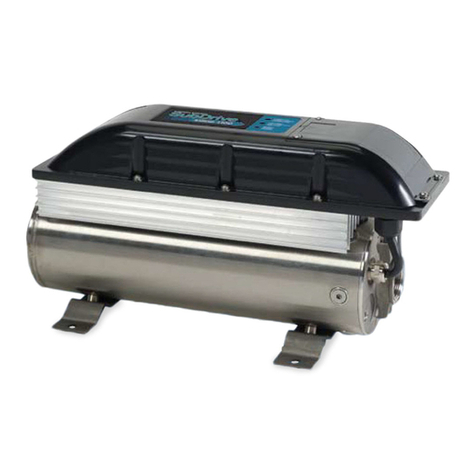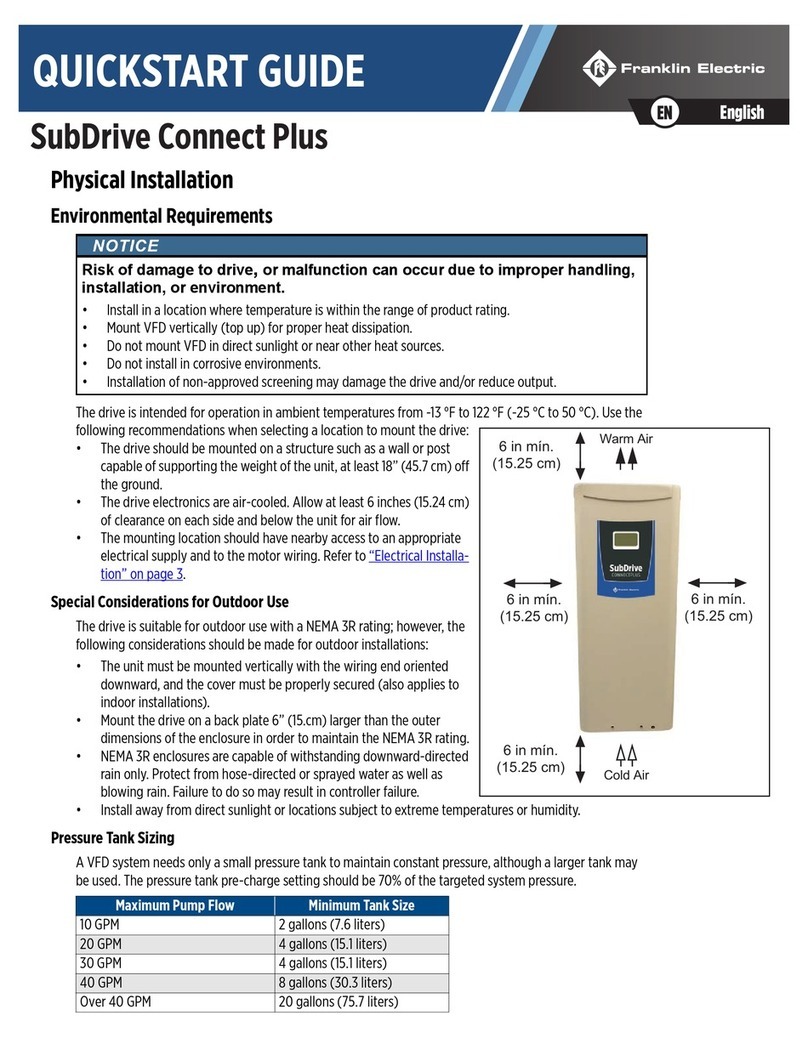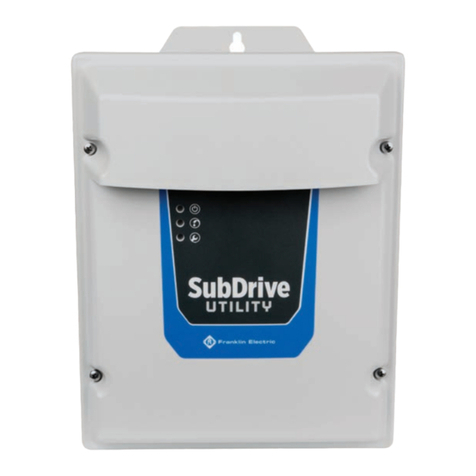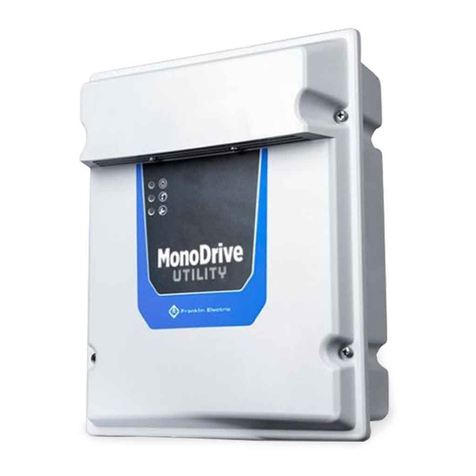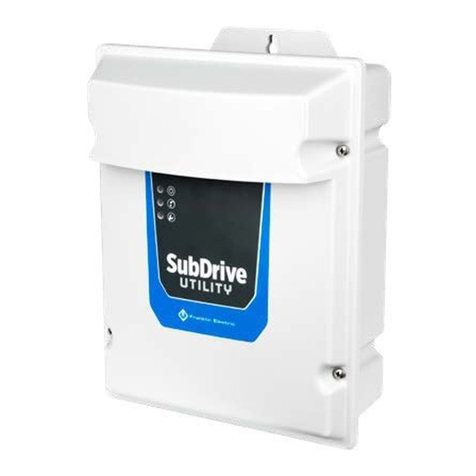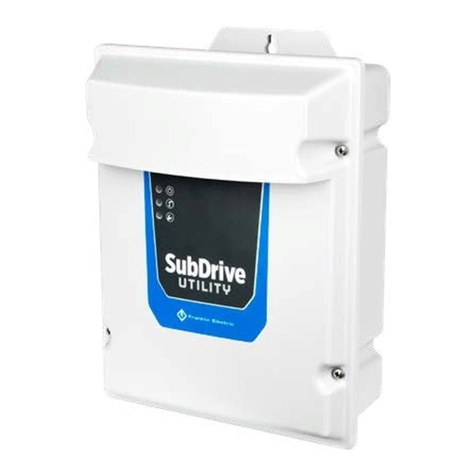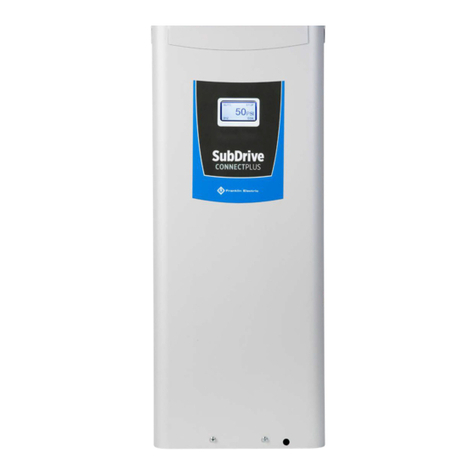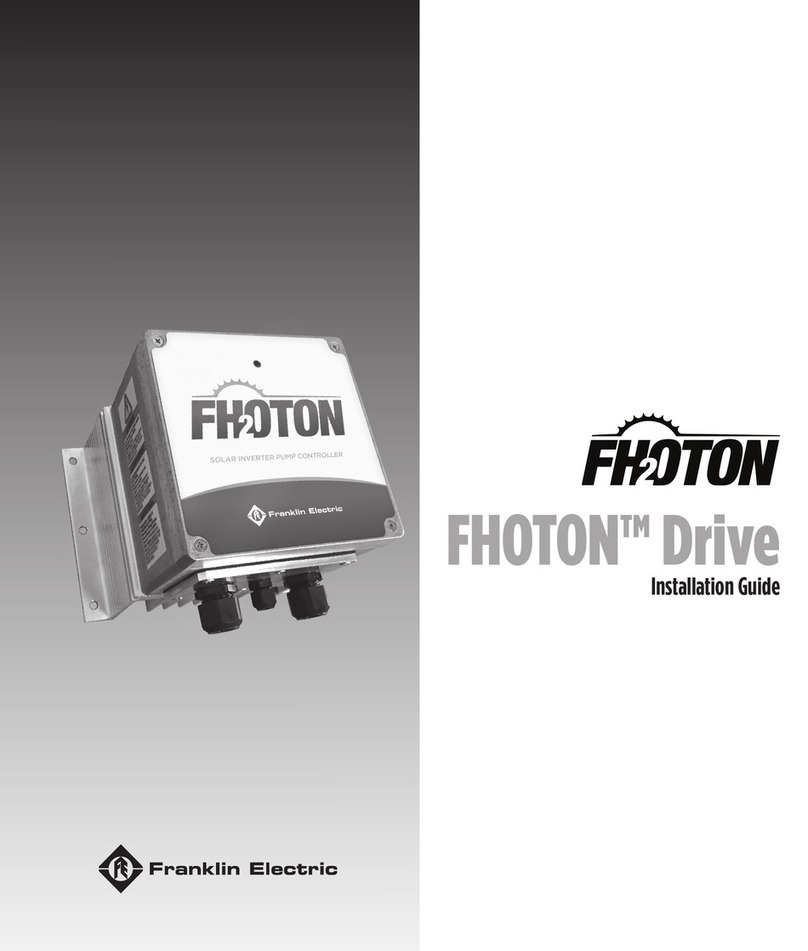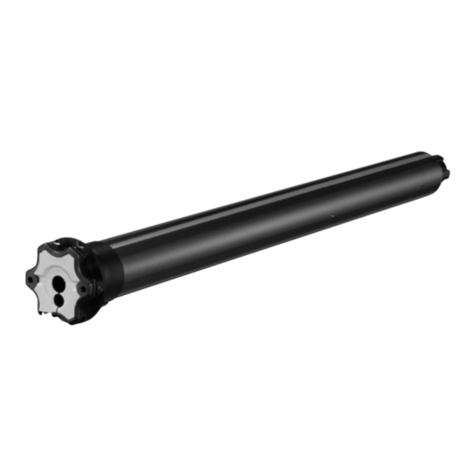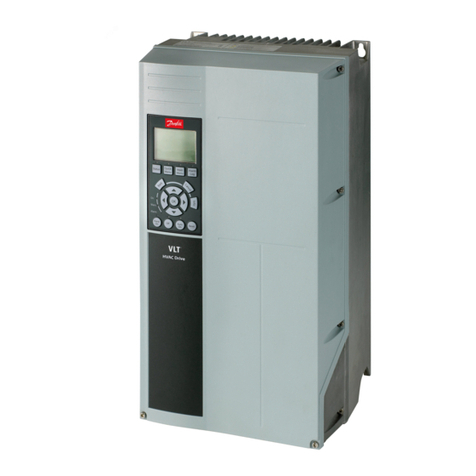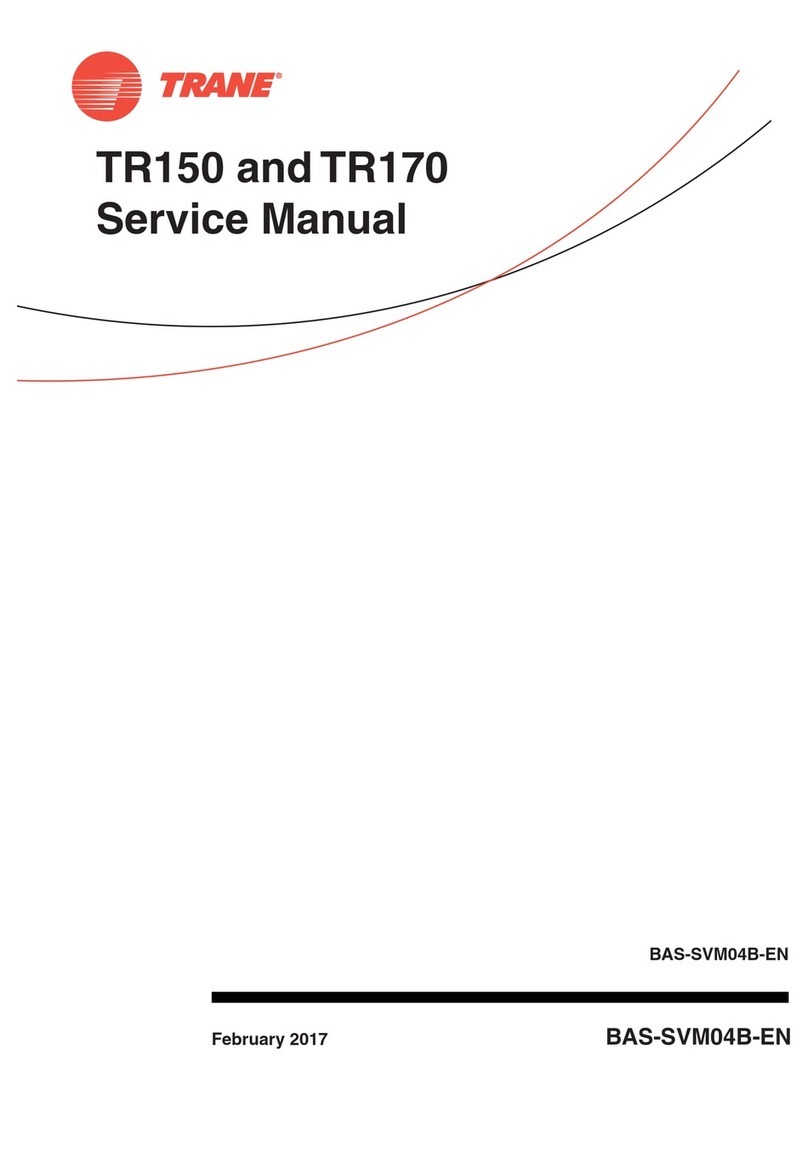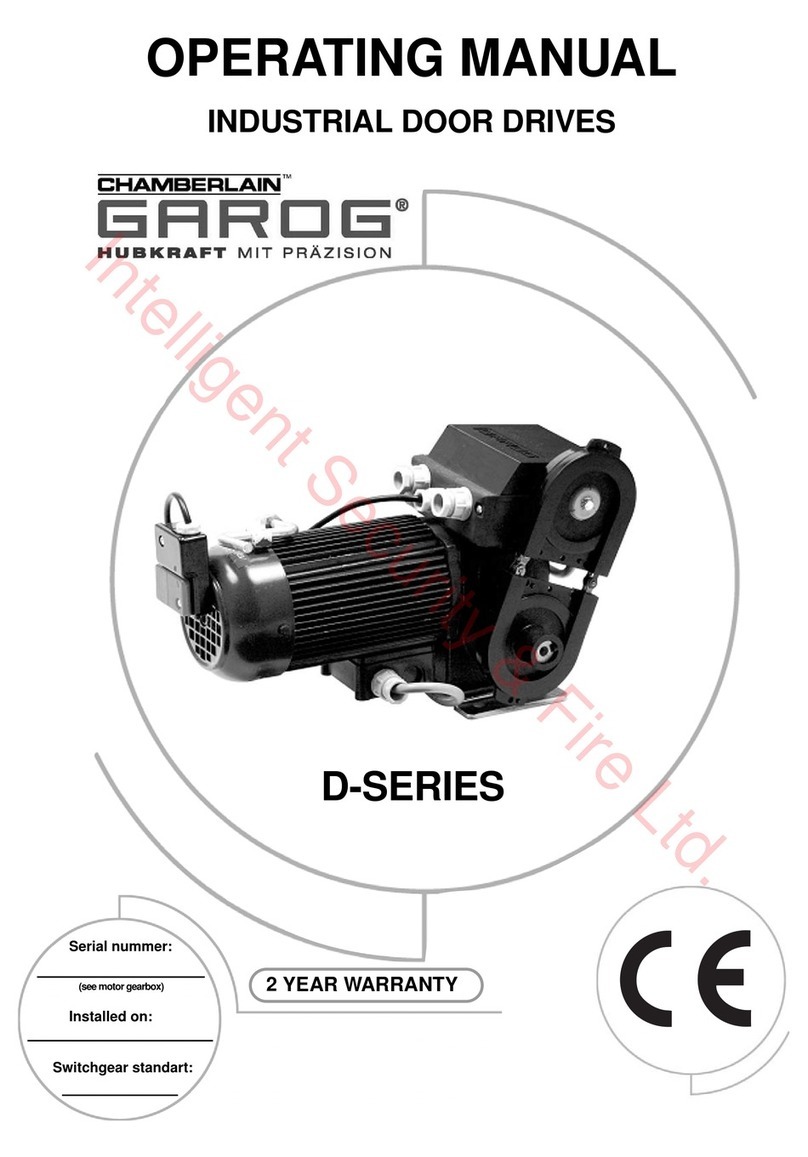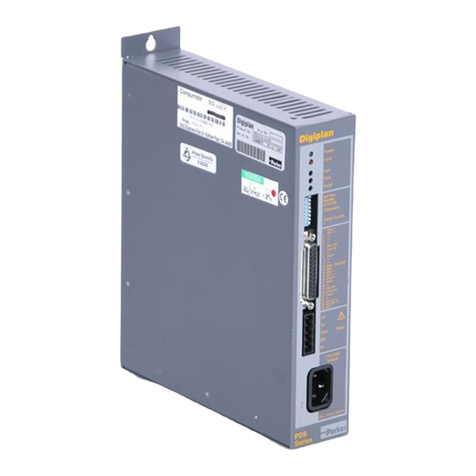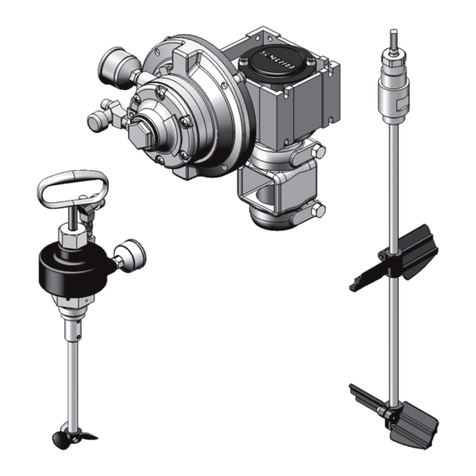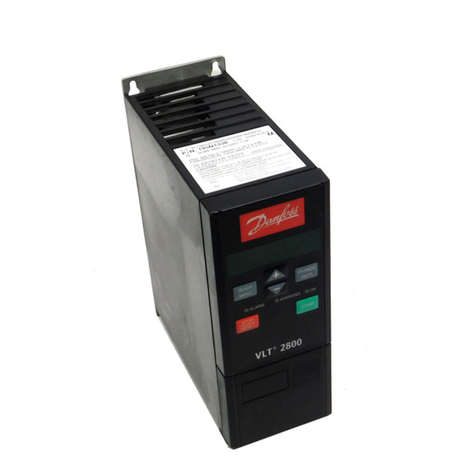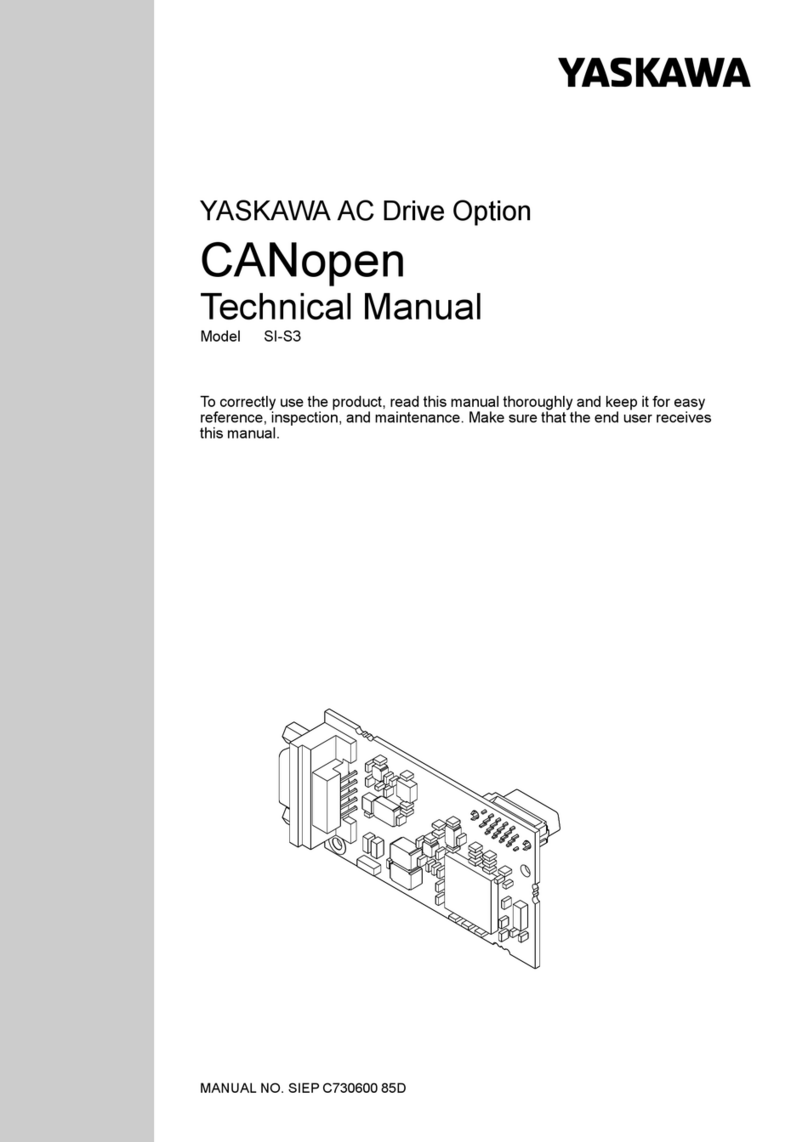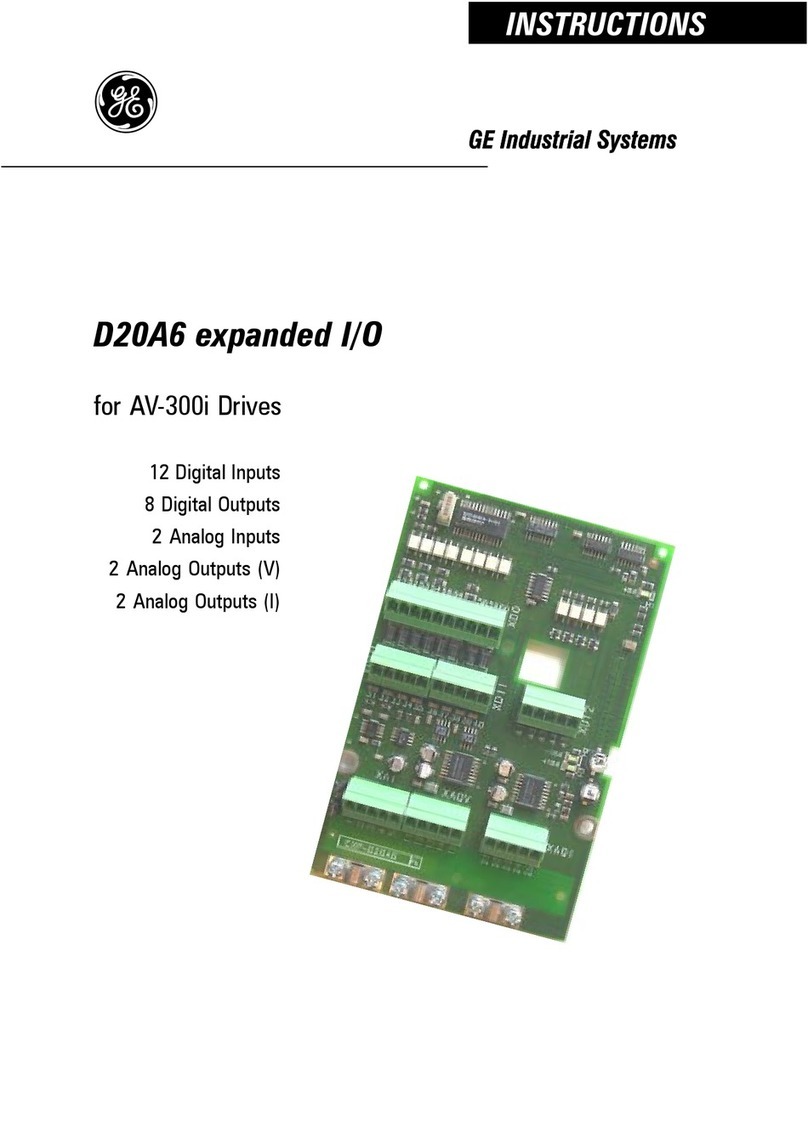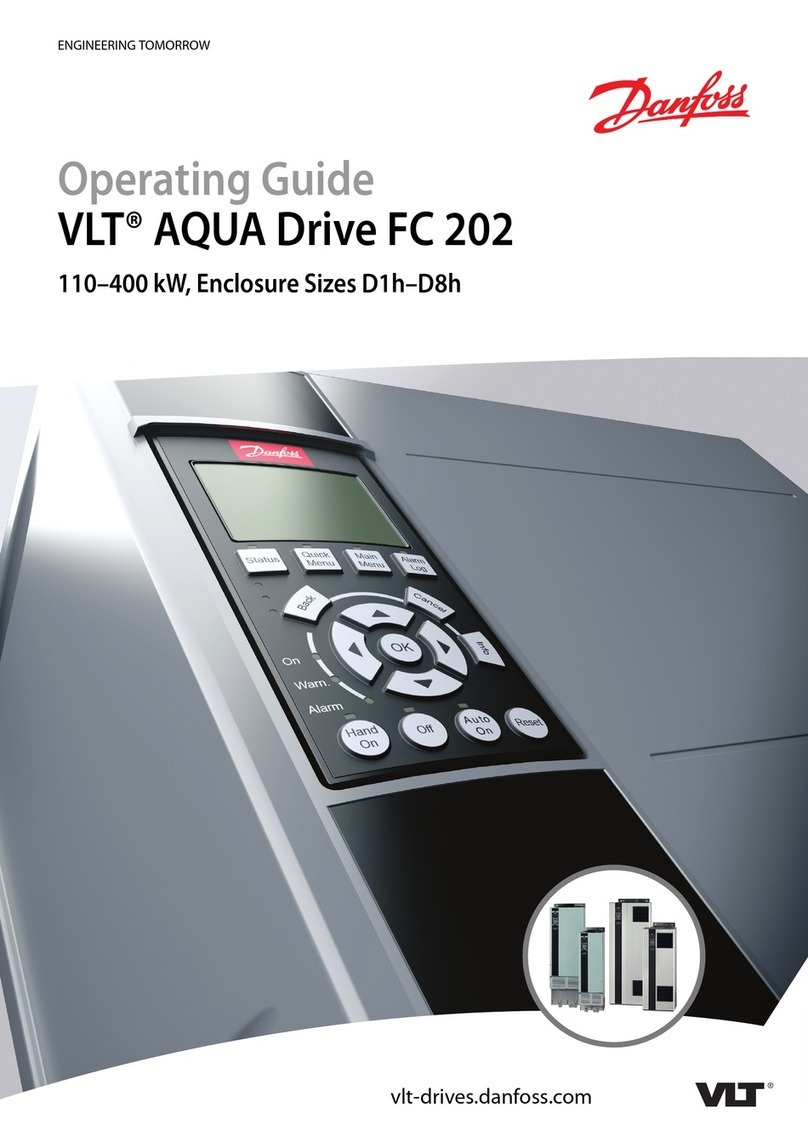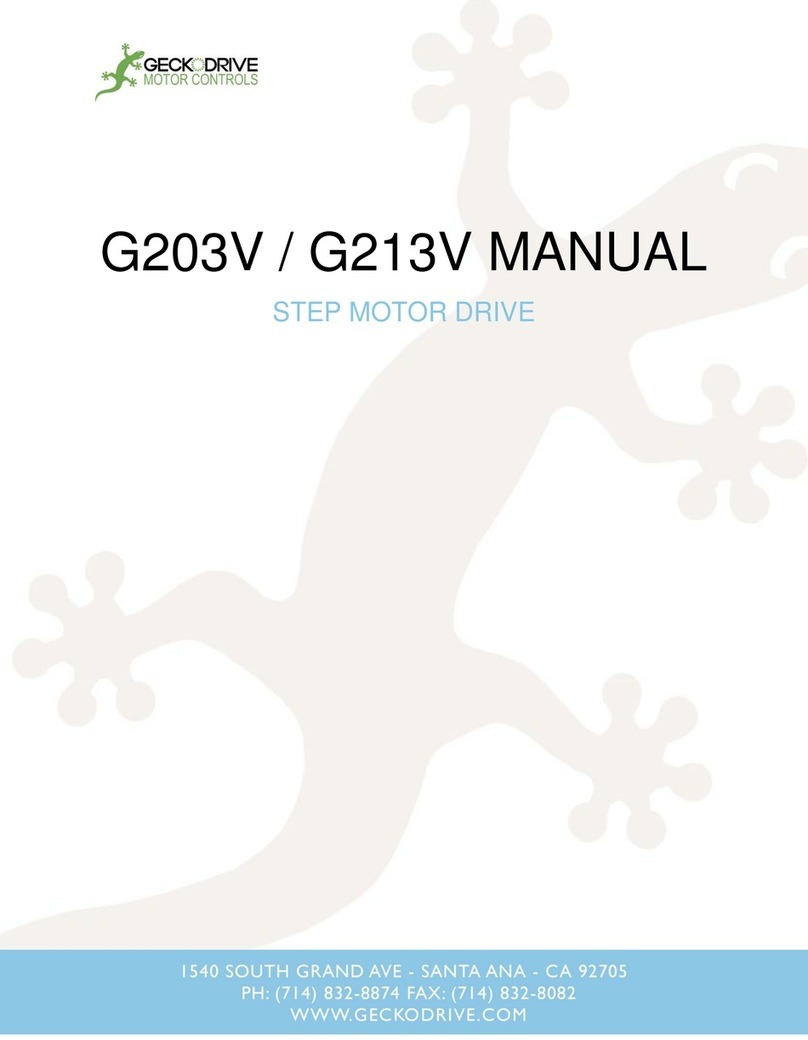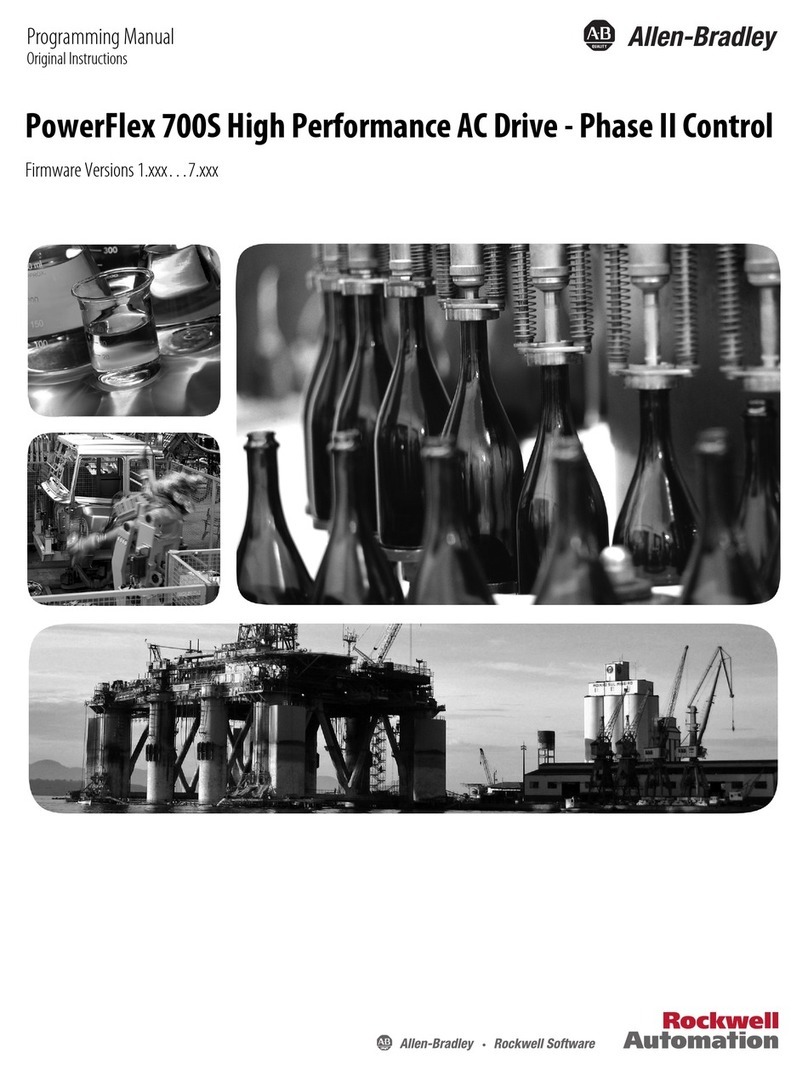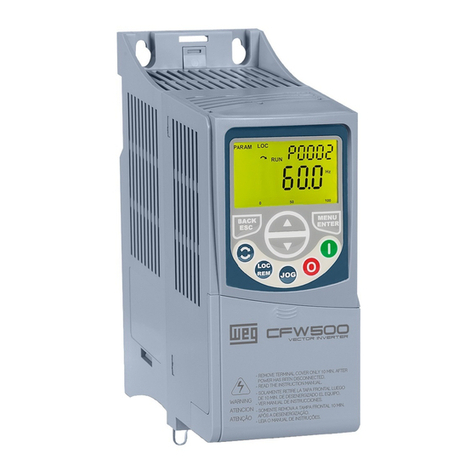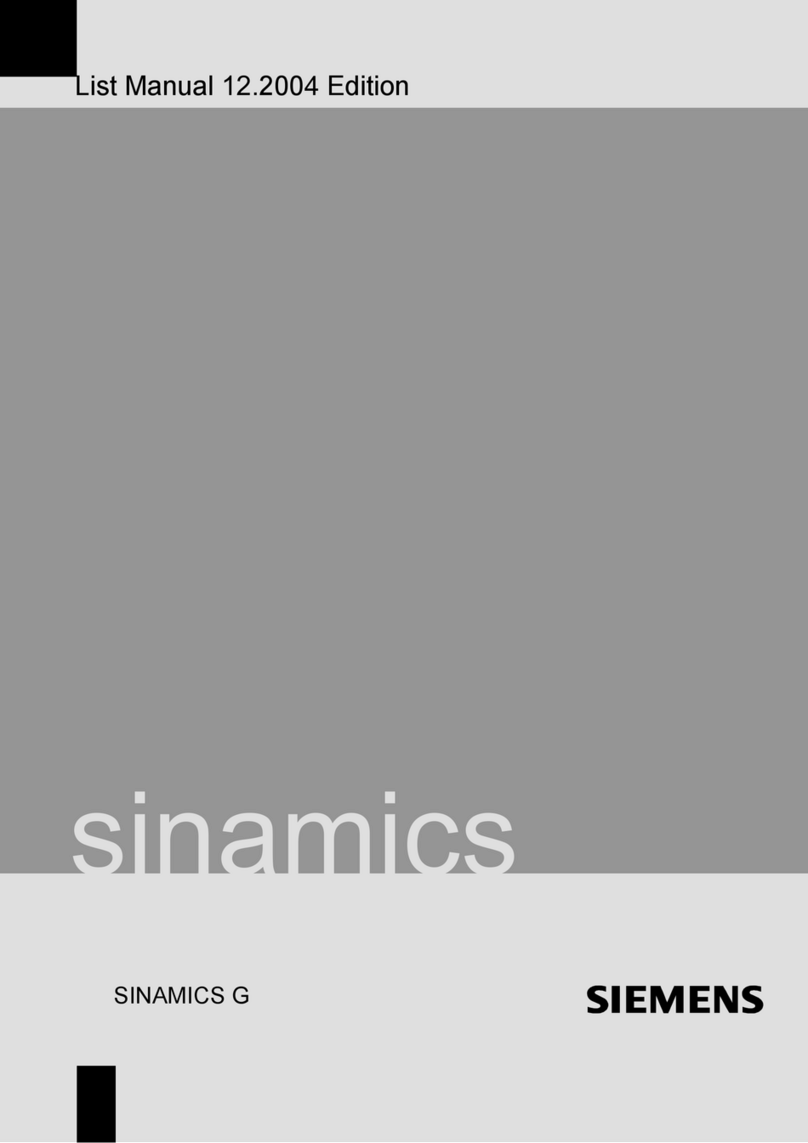
QUICKSTART GUIDE
Drive Configuration
8
Drawdown: When using a pressure transducer, a pressure offset can be set to allow for more water to be drawn from the pressure
tank before a sleeping drive will start. This will reduce sleep/wakeup cycles.
For example, a system setpoint pressure of 50 PSI and a drawdown value of 20 PSI would cause the drive to maintain system pres-
sure at 50 PSI when running; however when the system is idle, the drive will not start the motor until the system pressure drops
below 30 PSI.
System Response: System response time affects how the drive reacts to the pressure transducer/sensor feedback. Faster response
times can improve pressure stability in some systems. However, if the response is too fast, the system could overshoot, leading to
overpressure, rapid cycling, or hydraulic noise. Selections include SLOW, MEDIUM, FAST, and Custom. These control the following
configuration items:
• Proportional Gain, default = 500
• Integral Time, default = 25 (2.5 seconds)
• Ramp Time, default = 10 (1.0 seconds)
• Acceleration Time, default = 2s for SUB, 20s for CEN
• Deceleration Time, default = 2s for SUB, 20s for CEN
Underload Sensitivity: The drive is configured to ensure detection of Underload faults in a wide variety of pumping applications. In
rare cases (as with certain pumps in shallow wells), this trip level may result in unnecessary faults. If the pump is installed in a shal-
low well, activate the drive and observe system behavior. Once the system begins to regulate pressure, check operation at several
flow rates to make sure the default sensitivity does not cause false Underload trips.
•Shallow Set: If the pump is installed in an extremely shallow well and the system continues to trip, then adjust to a lower sen-
sitivity setting. Check the Underload trip level and repeat as necessary.
•Deep Set: In cases where the pump is set very deep, run the system at open discharge to pump the well down and observe
carefully that an Underload is detected properly. If the system does not trip as it should, adjust to a higher sensitivity setting.
Underload Off Time: This setting determines how long the drive will wait before attempting to run after an Underload event. The
default is Smart Reset, but is user-adjustable from 5 minutes to 24 hours.
• Smart reset will set the underload off time to 5 minutes for the first fault. If the drive faults again immediately following the 5
minute off time, the next off time is doubled.
QR Code: This screen displays a code identifying the drive for connection to the mobile app. This screen also displays the software
version and the drive/motor voltage.
Fault Codes: While the QR code is displayed, pressing the DOWN button causes the display to scroll through the last five fault
codes beginning with the most recent one. The display shows the Fault Log Number (1-5), Fault Code, Fault Description, Date/Time
(shown as mm/dd/yy hh:mm:ss).
Special Functions
Reset to Factory Settings: From the HOME screen, press and hold the UP/DOWN/NEXT buttons at the same time for 3 seconds. A con-
firmation screen (Are you sure?) appears in the display. Choosing YES restores all programmable parameters to factory default set-
tings (fault history is NOT cleared). Choosing NO reverts back to the HOME SCREEN.
MANUAL STOP Mode: From the HOME screen, press and hold UP/DOWN buttons together for 2 seconds to manually place the
drive in STOP mode. The display shows STOP in the upper right corner of the HOME screen where RUN/STOP status is shown (same
as placing a jumper on the RUN/STOP input terminal).
When activated, MANUAL STOP displays centered at bottom of HOME screen where the motor speed (HZ) and output current (A)
readouts were displayed.
Pressing the UP/DOWN buttons again for 2 seconds removes the drive from manual stop mode.
